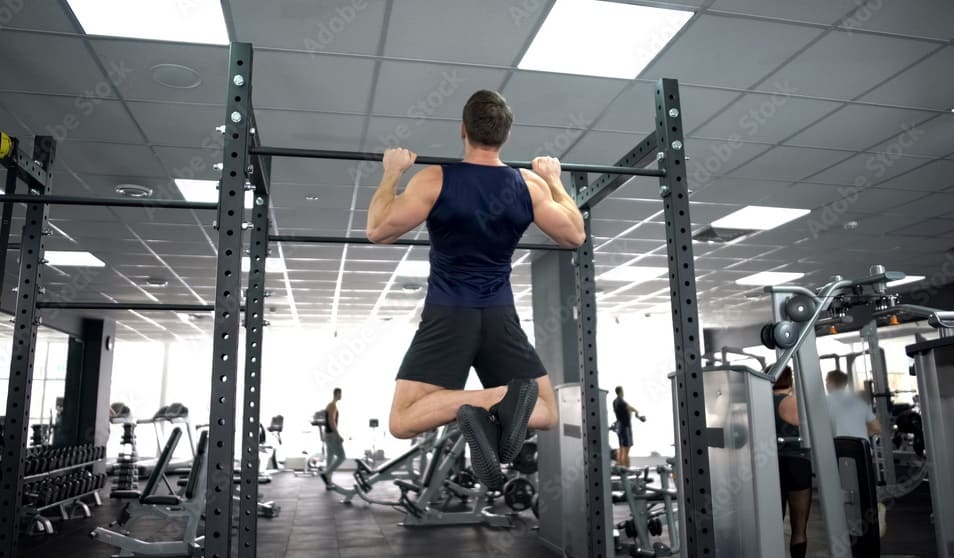Let’s be real: pull-ups can feel like one of the toughest exercises at the gym. You might walk up to the bar full of determination… only to hang there like a coat on a hook. It’s frustrating, we know. But here’s the truth—pull-ups aren’t impossible. In fact, with the right game plan, you can turn them from your biggest struggle into your proudest achievement. Ready to conquer the bar? Let’s dive into the ultimate guide on how to make pull-ups a breeze.
How to Do Pull-Ups the Right Way? Step-by-Step Guide
1. Start with Assisted Variations
Not everyone can bust out 10 clean reps right away—and that’s okay! Instead of struggling from the get-go, try assisted pull-ups, which help you build the strength needed for the full movement.
Options for Assistance:
- Resistance bands: Loop them around the bar and place one or both feet inside. The thicker the band, the more assistance it gives.
- Assisted pull-up machines: These are found in most gyms and let you select how much help you need.
- Partner-assisted: Have a workout buddy help lift your legs slightly as you pull up.
Pro Tip: Track your progress by slowly decreasing the assistance over time.
2. Strengthen the Right Muscles First
Pull-ups aren’t just about your arms—they rely heavily on your lats (back muscles), shoulders, biceps, core, and grip. If these areas are weak, your pull-up will suffer.
Key Exercises to Include in Your Routine:
- Lat pull-downs – targets the same muscles used in pull-ups
- Seated rows or dumbbell rows – helps build back strength
- Bicep curls – for arm support
- Planks & leg raises – core strength is crucial for stability
- Dead hangs – improves grip and endurance
Think of it like building the foundation before the house—these moves are your groundwork.
3. Master the Technique
Form matters. Bad form can lead to strain, injury, or just a lot of wasted effort. Here’s what good pull-up form looks like:
Step-by-Step Pull-Up Form:
- Grip the bar slightly wider than shoulder-width, palms facing away (for standard pull-ups).
- Engage your core and glutes—no swinging!
- Pull from your elbows, not your hands—imagine your elbows pulling toward your ribs.
- Bring your chin above the bar, leading with your chest.
- Lower yourself slowly and in control, fully extending your arms.
Avoid common mistakes like using momentum, arching your back, or only half-lifting.
4. Train Your Grip – It’s More Important Than You Think
Surprise: your grip strength can be the thing holding you back. If your hands tire out before your muscles do, it’s time to train them.
Grip-Boosting Exercises:
- Dead hangs (just hang from a pull-up bar for time)
- Farmer’s carries (walk while holding heavy dumbbells)
- Wrist curls or grip strengtheners (simple tools like hand grippers work wonders)
Aim for 30–60 seconds of dead hangs daily to see major improvements.
5. Don’t Skip Mobility & Stretching
Tight shoulders, stiff lats, or poor shoulder mobility can make pull-ups feel painful or awkward.
Add These to Your Routine:
- Shoulder circles and wall slides for shoulder mobility
- Foam rolling the upper back and lats
- Lat stretches using a bar or doorway
Flexible muscles are more efficient and reduce injury risk during pull-ups.
6. Rest, Recover, and Refuel
Overtraining won’t help you improve faster—it’ll just lead to burnout or injury. Your muscles grow when you rest and refuel, so don’t skip recovery days.
Recovery Tips:
- Take at least 48 hours between pull-up sessions.
- Eat enough protein and carbs to support muscle repair.
- Get 7–9 hours of sleep every night.
- Consider active recovery like yoga, walking, or light stretching.
7. Consistency Is the Secret Sauce
The people who can do multiple pull-ups didn’t get there overnight—they just kept showing up. Progress might feel slow, but every rep, every hang, every effort builds strength.
Try This Beginner Pull-Up Plan:
Day 1: Assisted pull-ups (3 sets of 5) + lat pull-downs + planks
Day 2: Rest
Day 3: Negative pull-ups (jump up, lower slowly) + dumbbell rows + bicep curls
Day 4: Rest
Day 5: Dead hangs + shoulder mobility + assisted pull-ups
Day 6-7: Rest or active recovery
Keep a journal to track reps, sets, and how you felt each session.
8. Breathe the Right Way
Yes, breathing matters! Holding your breath can increase tension and reduce performance.
Breathing Technique:
- Inhale before you begin pulling up.
- Exhale as you pull yourself up.
- Inhale again on the way down.
Proper breathing helps with endurance and keeps your body stable.
Final Thoughts:
Pull-ups aren’t just about physical strength—they’re a mental challenge too. It’s about showing up when it’s hard, pushing past the plateau, and celebrating every inch of progress.
Remember:
- Everyone starts somewhere.
- Your body is capable of more than you think.
- The bar doesn’t care where you started—just that you keep trying.
So next time you walk up to that bar, take a deep breath and say to yourself, “This time, I’m one rep closer.”
Also Read:
